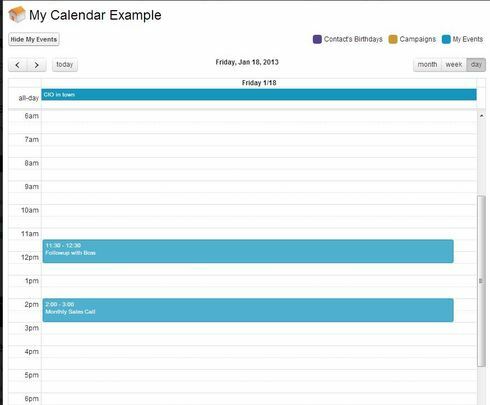Pat,
I’m not sure if this will fix anything for you, but I believe it’s best practice for model’s used as calendar event sources to NOT load on page load. I’d try to uncheck load on pageload for both models, but keep your action on the events model to query AllDayEvents when it’s queried, and see what happens.
Set the models to not load on page load.
Still peculiar.
Any suggestions on how to view All Day Events when not on Month view?
Pat~
I see something funny too with all day events on non-month view as well. If you add the start and end time fields to your table with the condition “All Day” = true, what do you see? I’m noticing that all my all day events are showing up as a tiny sliver of color at 5:00 pm on the calendar which matches what’s showing in the table no matter what start and end time I had originally put in there … I’ll check in with the devs about the All Day event field …
Thanks for pointing this out!
Karen
This helps with the week view.
.nx-cal-event.nx-cal-event-week { min-height: 20px; }
The Day Scheduling View is another matter. Don’t even get the sliver.
Pat~
Apparently, you’ve found a bug. The developers are aware of this issue. I will update this post when a future release addressing this bug is available.
Thanks for alerting us of this bug and helping make Skuid better!
Karen
This reply was created from a merged topic originally titled Appearance of all day events.
Does Skuid support all-day events? Is it possible to have it appear like this image?
We are trying to show team member’s time off without interfering with day-to-day scheduling.

Hi Guys,
as a temporary fix, you could try this:
Create two custom date/time formula fields.
Start:
IF(IsAllDayEvent = true,DATETIMEVALUE(DATETIMEVALUE(DATE(YEAR(ActivityDate), MONTH(ActivityDate), DAY(ActivityDate))) +5/24),ActivityDateTime)
End:
IF(IsAllDayEvent = true,DATETIMEVALUE(DATETIMEVALUE(DATE(YEAR(ActivityDate), MONTH(ActivityDate), DAY(ActivityDate))) +19/24),ActivityDateTime+(DurationInMinutes/1440))
It looks a bit confusing, what you are doing here is:
First of all, you recreate the date based on the activity date. You have to do it this way, because SF gets confused with recordtypes elsehow. Afterwards, we cast the created date to a datetime field and add the start-/endtime as increments of a day (19/24 equals 7 o’clock in the evening in UTC +00:00). If it’s not an all day event, we simply take the start datetime of the event and add the duration. Since the duration is in minutes and we have to add it as well as increments of a day, we have to divide the minutes by 1440.
Be aware, that you probably have to change the underlined part according to your time zone. In our time zone, this formulas create a duration from 7am to 9pm.
Hope that helps.
Reply
Enter your E-mail address. We'll send you an e-mail with instructions to reset your password.

